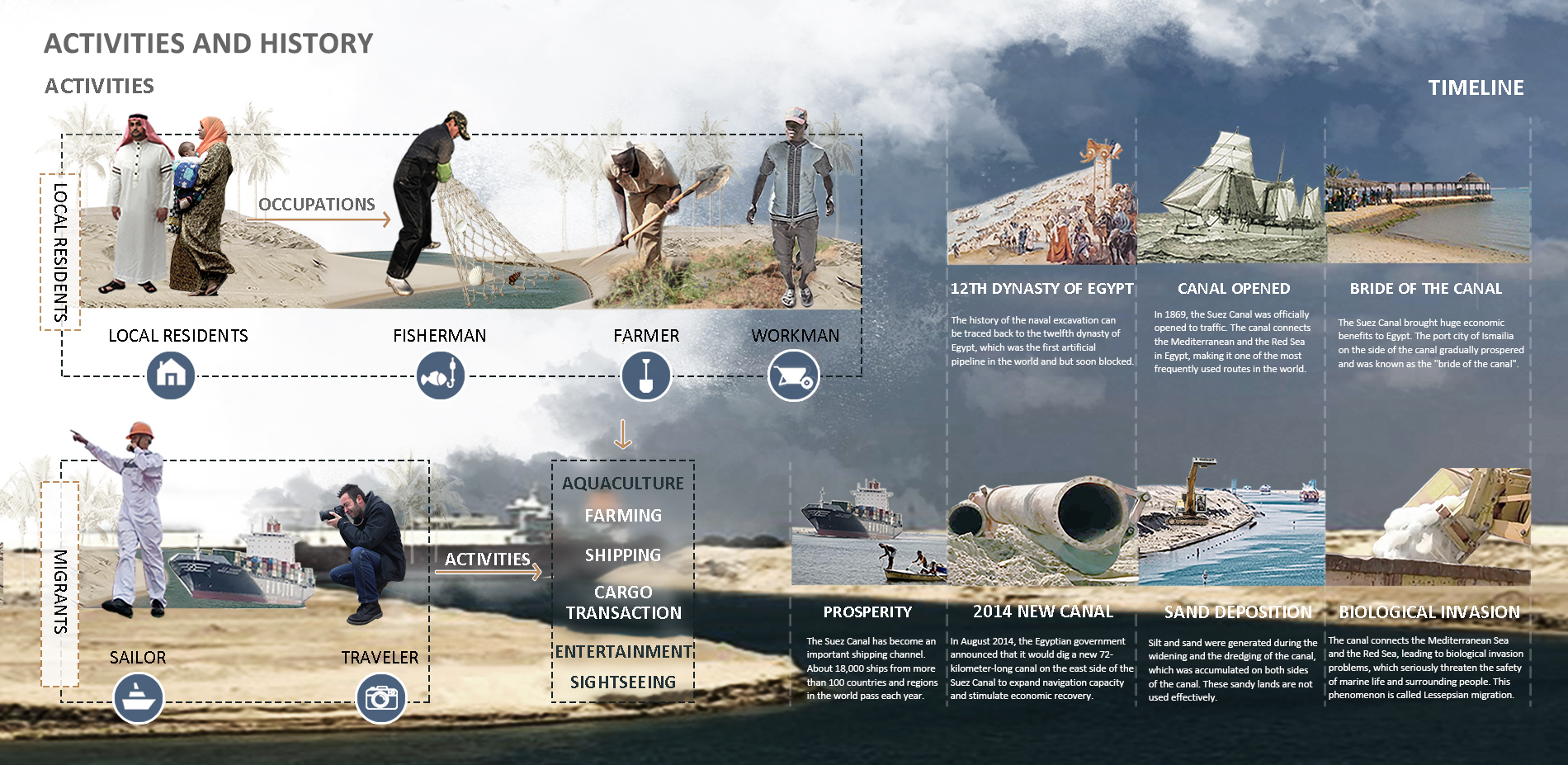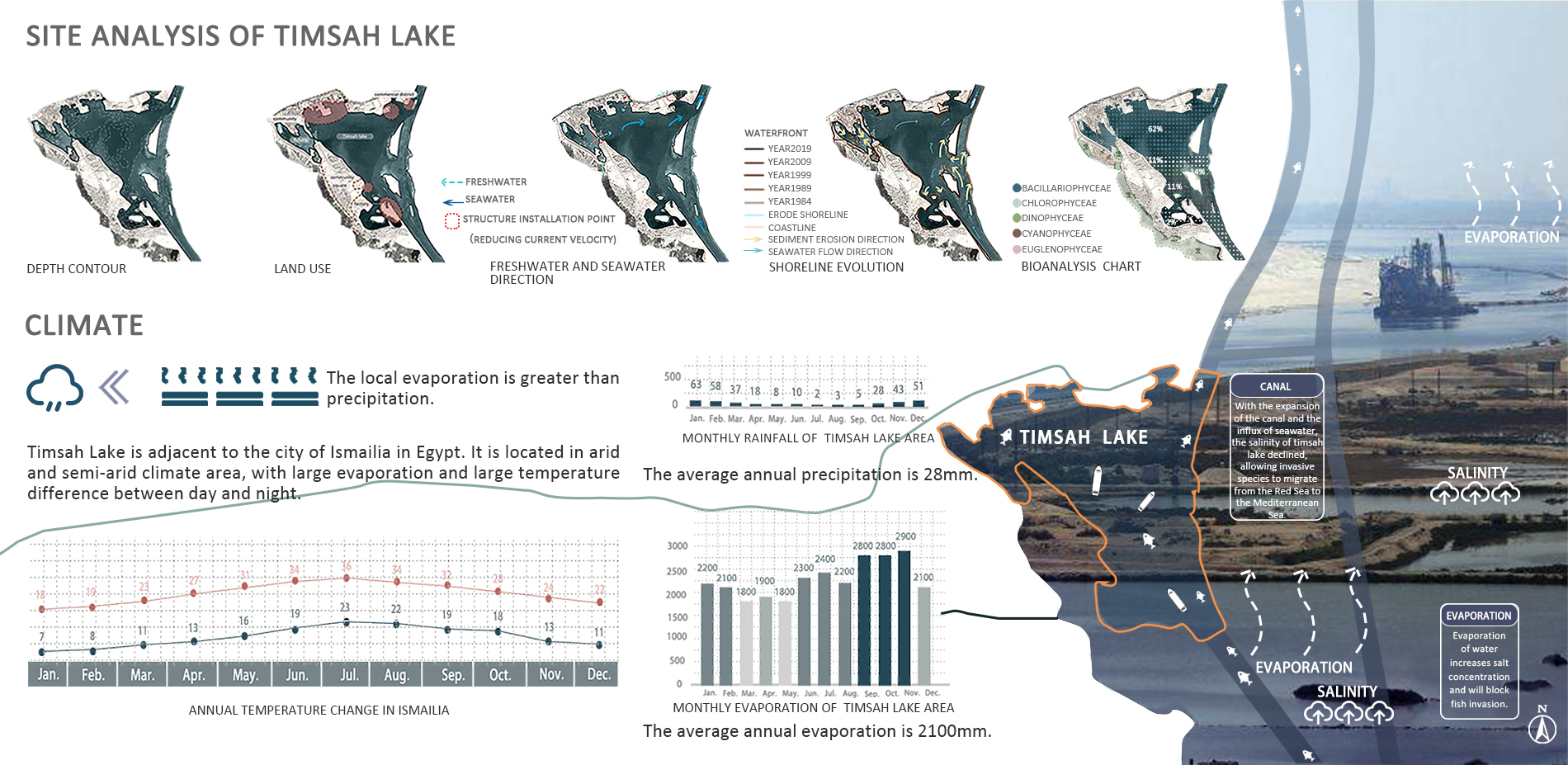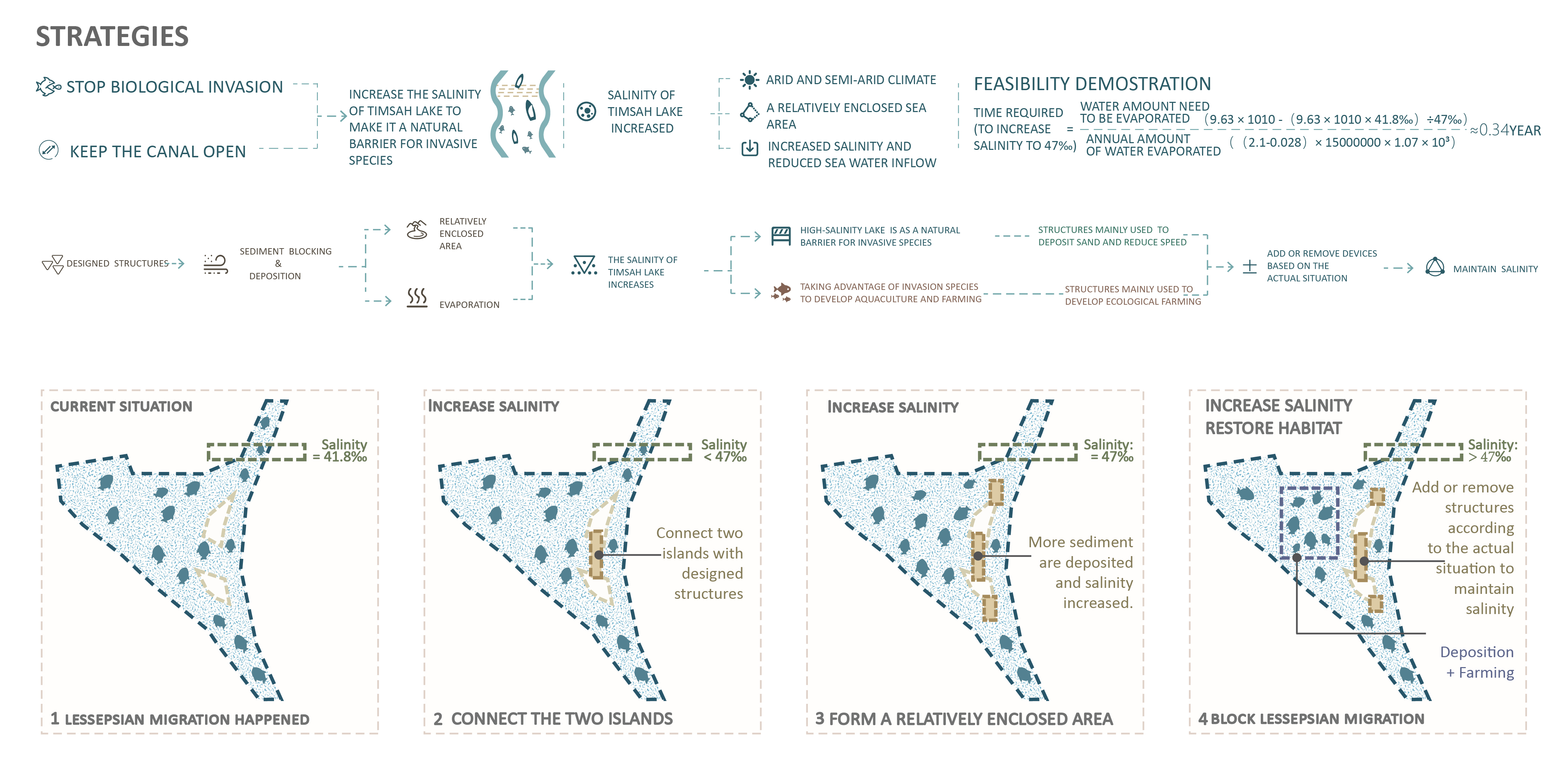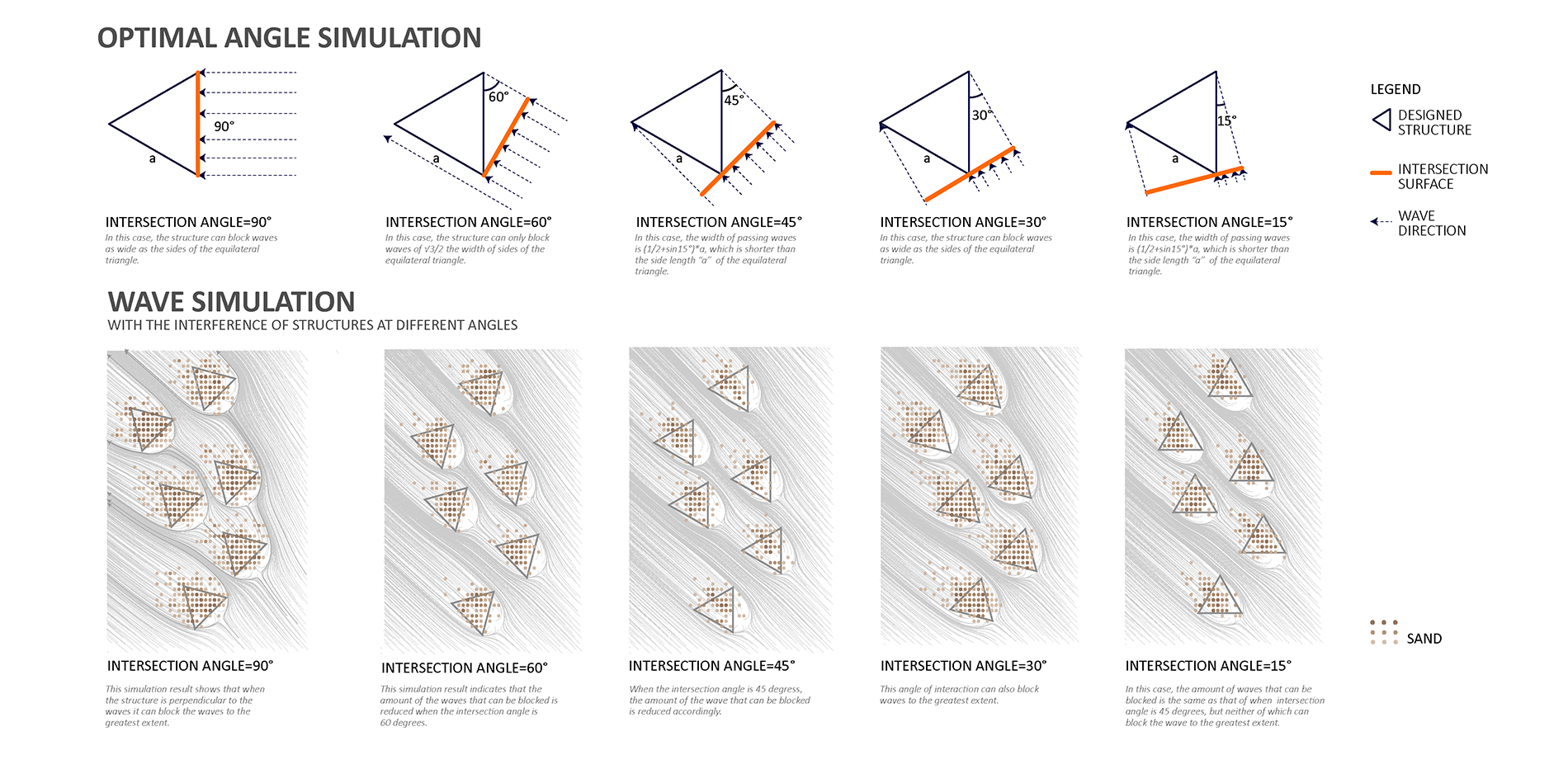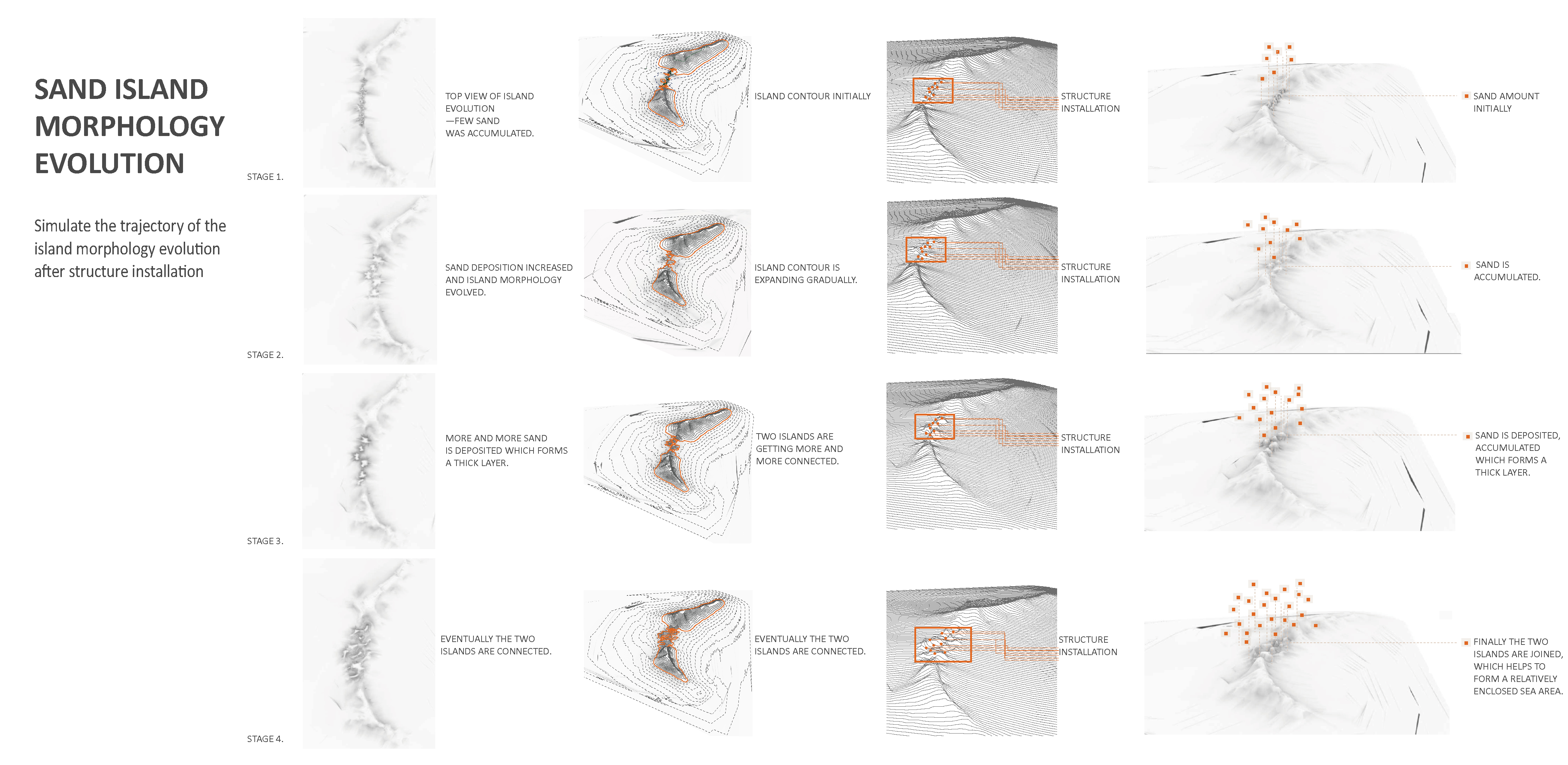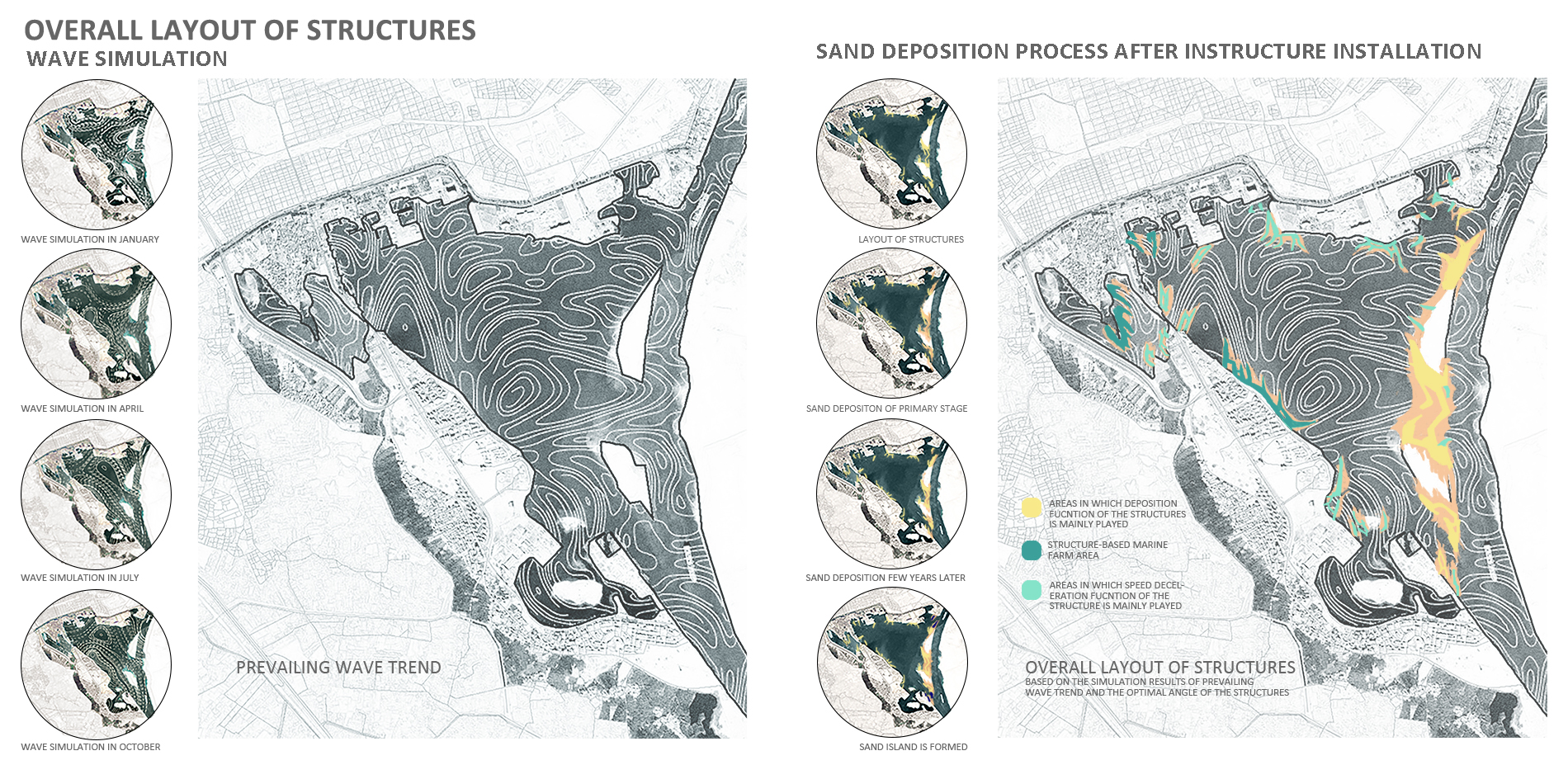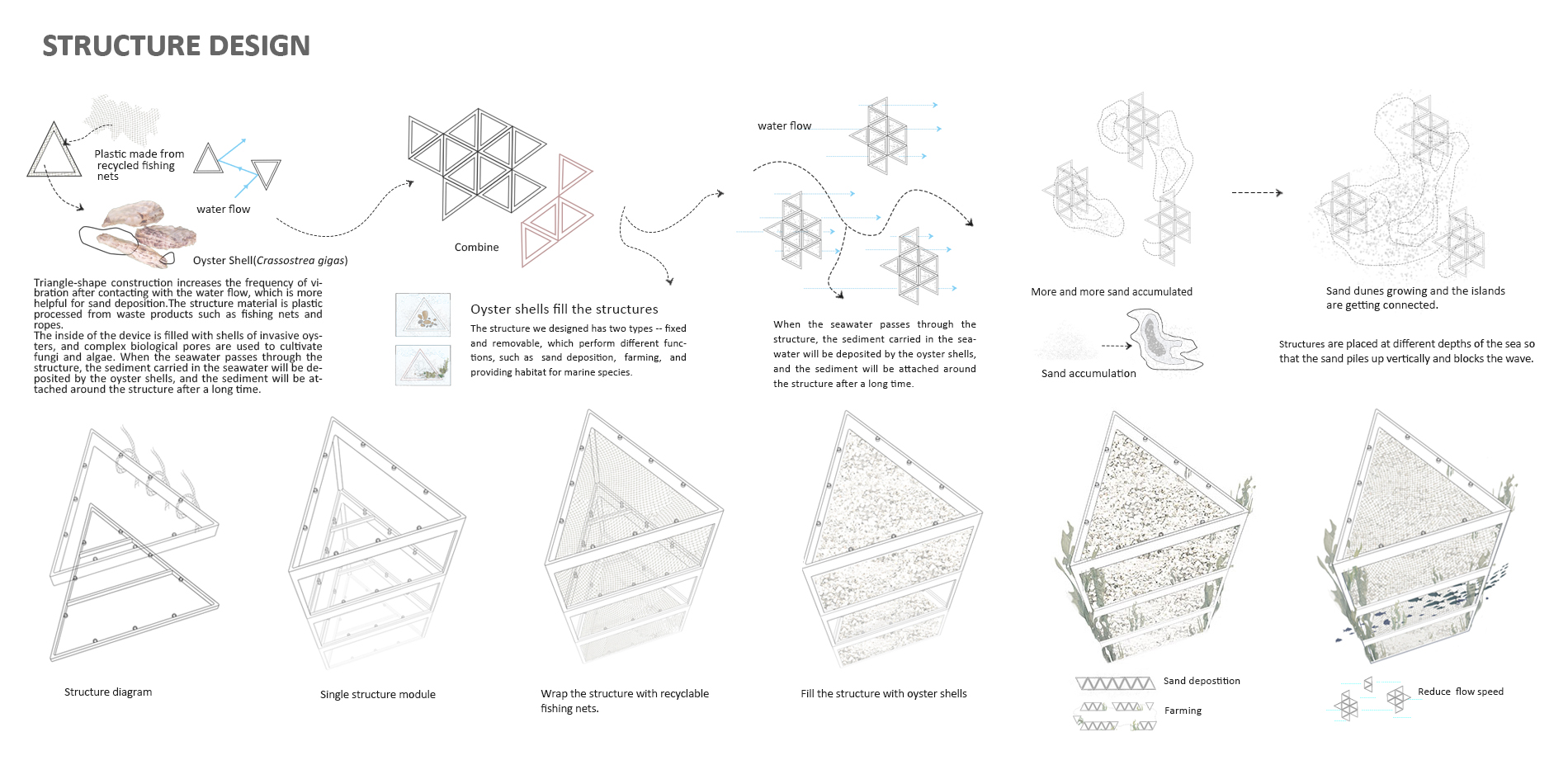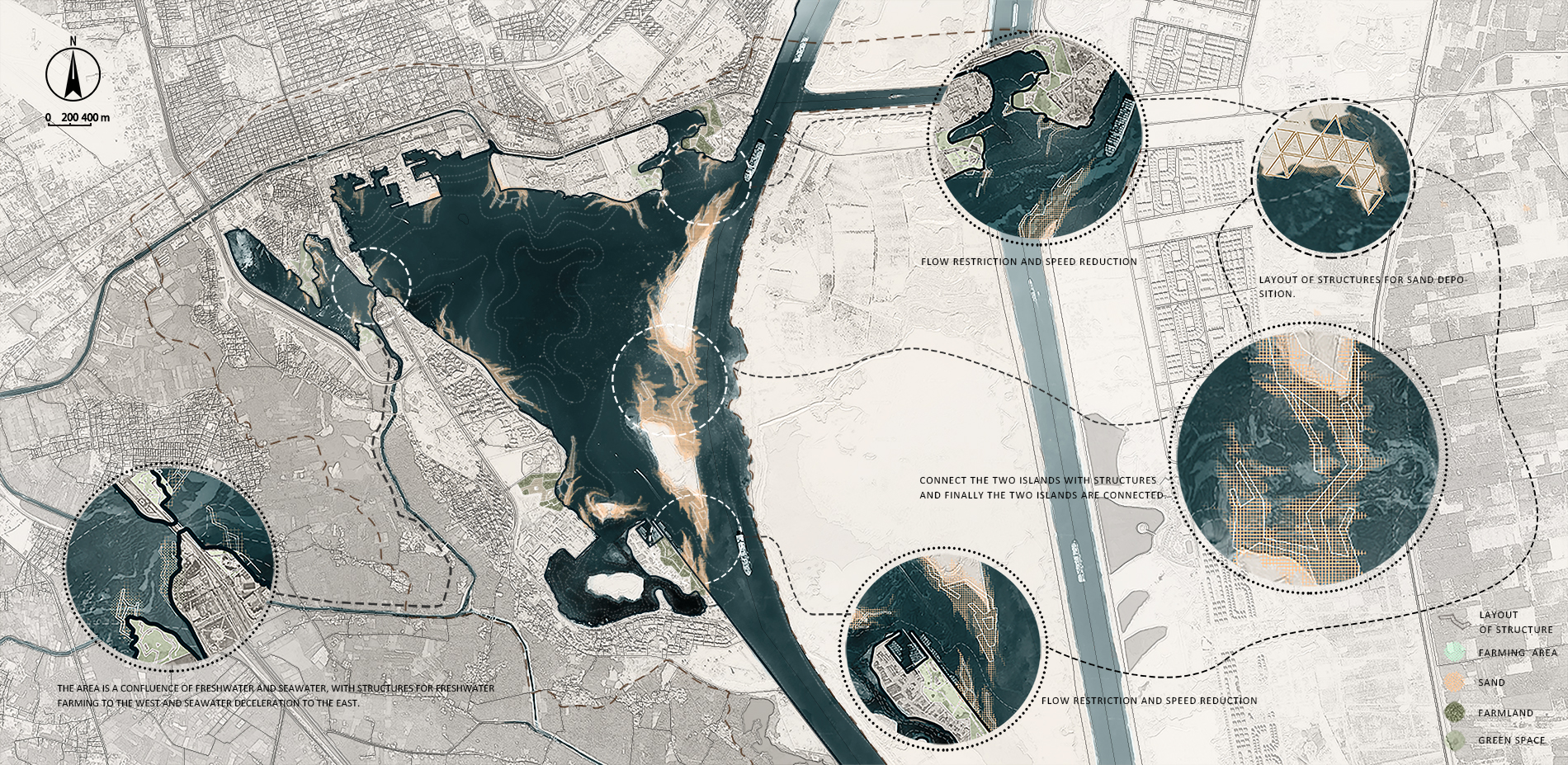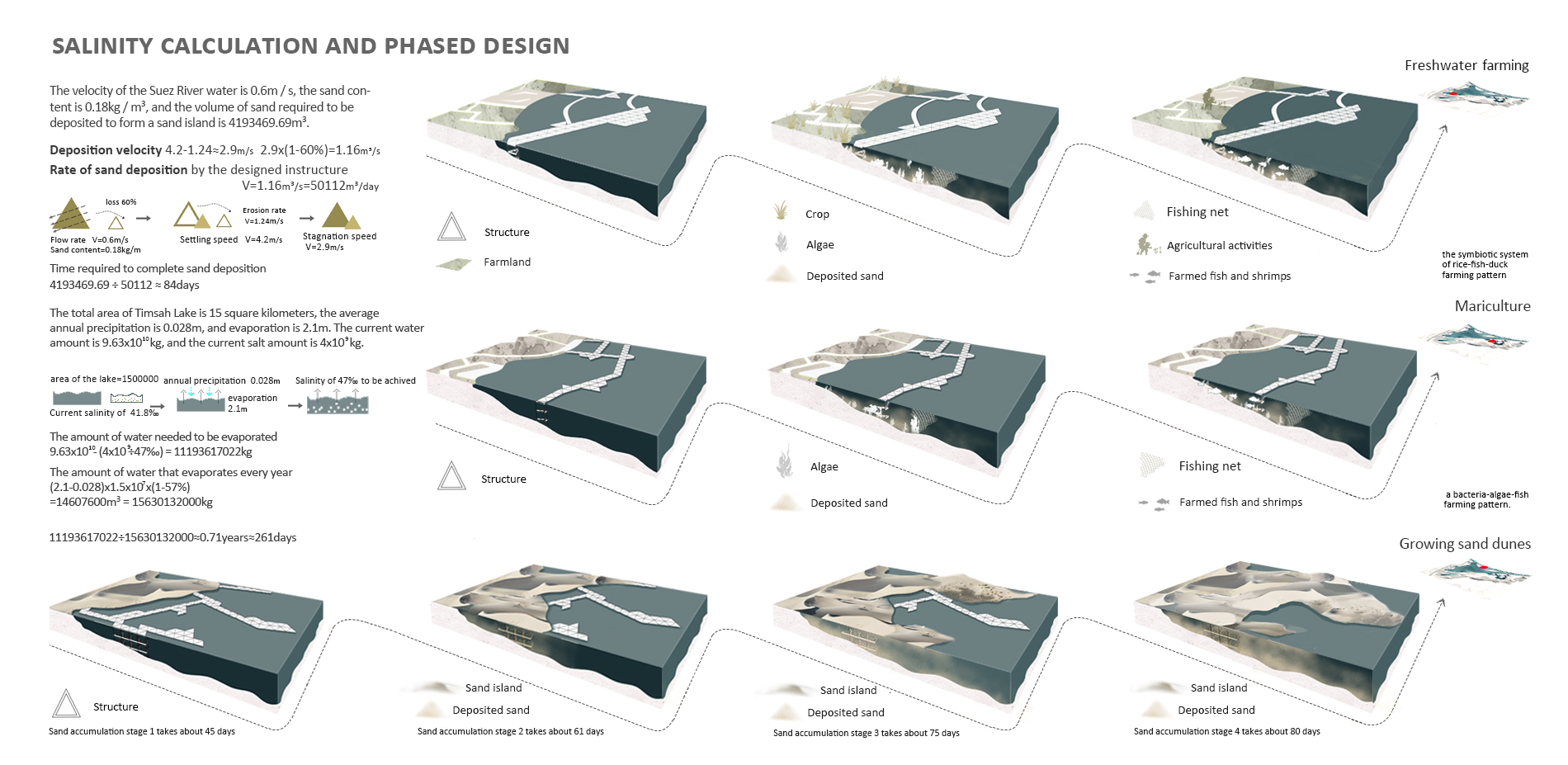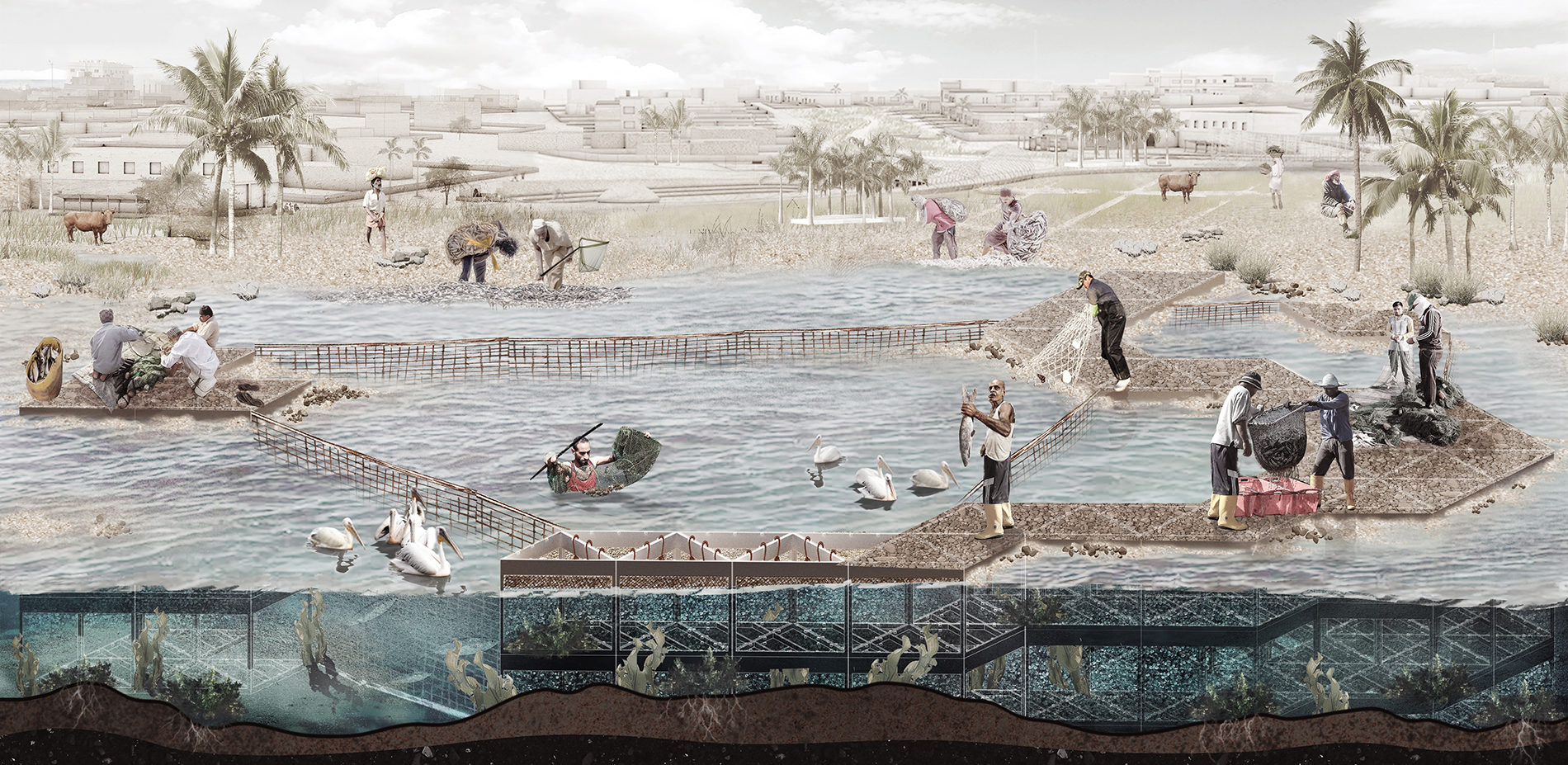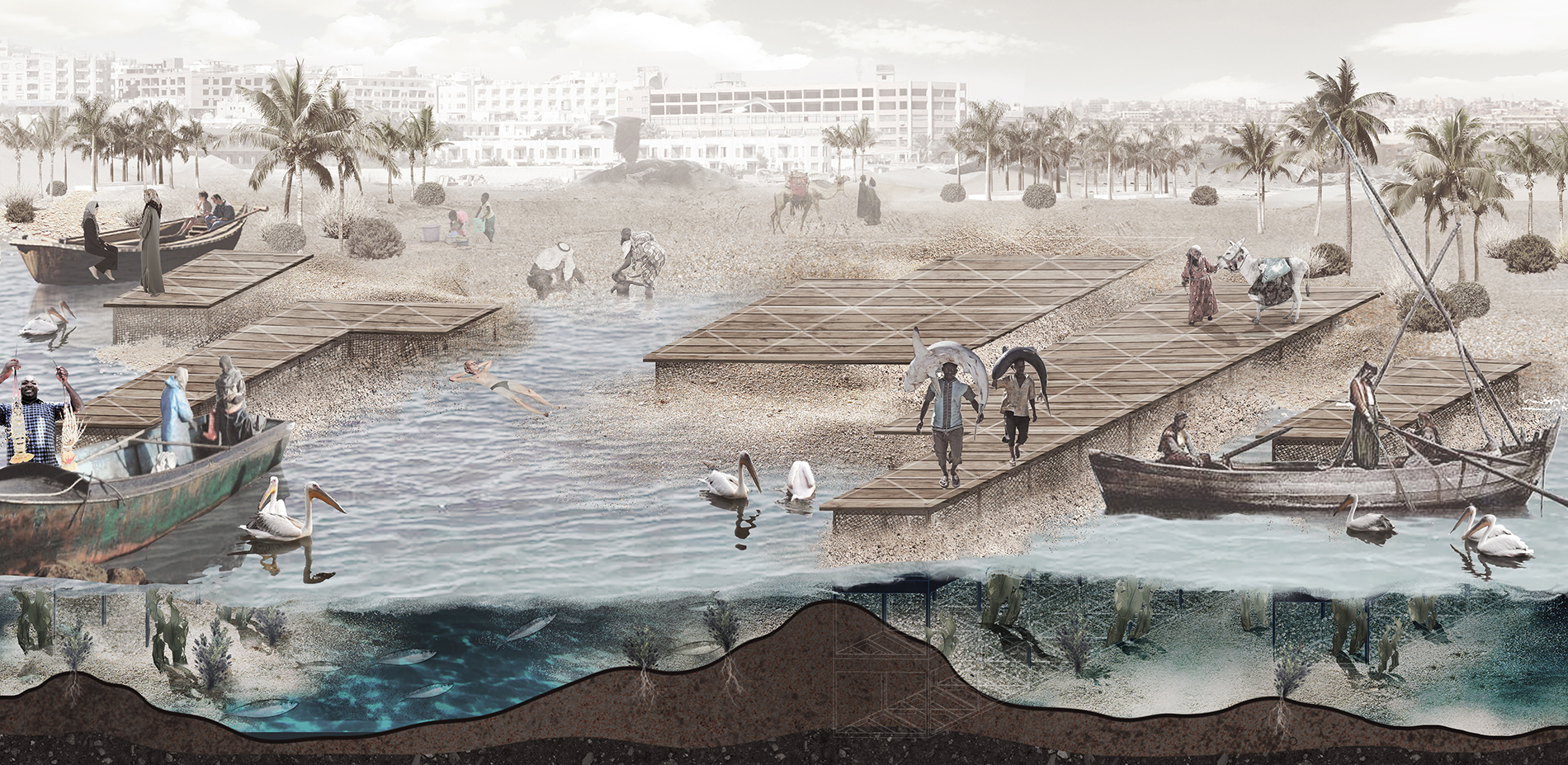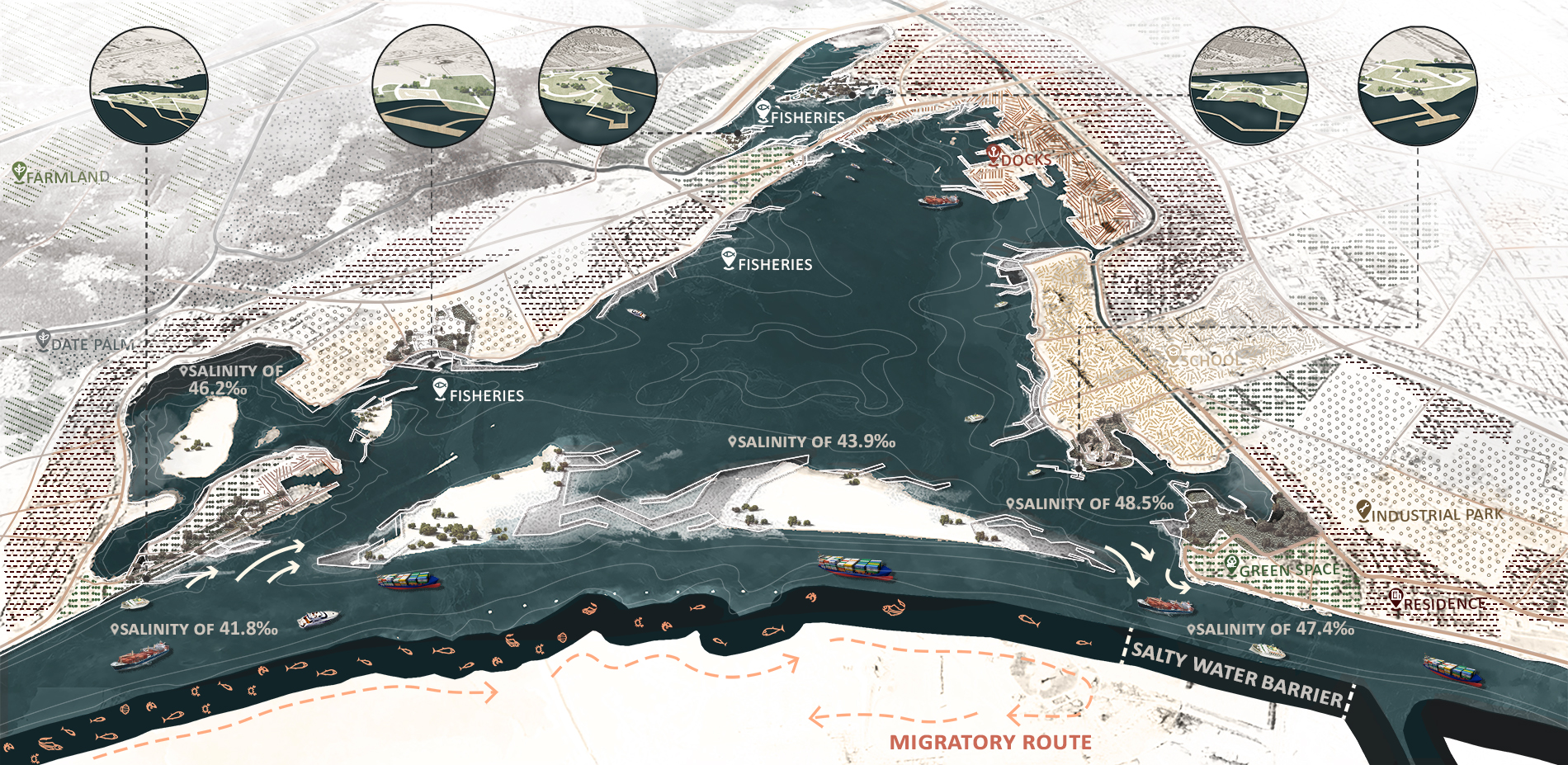Growing Sand Dunes-Habitat Restoration and Anti-Lessepsian Migration With Landscape Eco-Infrastructure
Honor Award
General Design
Yue Zhou, Student ASLA; Huili Gong; Qijie Shi; Wei Yan; Yuqi Gu
Faculty Advisors: Jun Zhai
Soochow University, School of Architecture
A decrease in salinity of the Great Bitter Lake, located along the Suez Canal, has eroded the natural barrier that prevented invasive marine species from spreading from the Red Sea to the Mediterranean. Using nearby Timsah Lake as a case study, this project reverses a human-made issue, forming a dune-like eco-barrier outside the shipping channel to enclose the majority of the lake and increase salinity enough to discourage the would-be invasive species from migrating. In addition to the proposed dune-like eco-barrier, this proposal also envisions the introduction of two new agricultural ecosystems located in separate freshwater and saltwater zones, thus integrating potentially invasive species into a sustainable food chain.
- 2020 Awards Jury
Project Credits
Teaching Assistant
Yixin Zhang; Xiaoyu Fu
Project Statement
This project aims to use landscape ecological infrastructure to solve the emerging issues of biological invasion after the expansion of the Suez Canal. The Great Bitter Lake, which passes through the Suez Canal, was originally a large natural saltwater lake with high salinity, which formed a natural high salinity barrier that prevented the creatures of the Red Sea from swimming towards the Mediterranean Sea. However, with the expansion of the Canal, the local ecosystem of Great Bitter Lake has been greatly altered. With the influx of seawater increased and the lake’s salinity decreased, increasing invasive species migrate from the Red Sea to the Mediterranean Sea, which significantly disrupts the ecosystems it colonizes. Besides, the nearby Timsah Lake, which is adjacent to the important port city of Ismailia along the Suez Canal also faces the same bioinvasion issues. Considering the economic and ecological importance of Timsah Lake and its surroundings, this project selected Lake Timsah as a pilot area to restore its high salinity and resist biological invasions, while developing ecological farming industries.
Project Narrative
Objective:This project aims to solve the emerging issues of biological invasion after the expansion of the Suez Canal. We used the designed landscape structures to restore altered ecosystem properties, salinity, bio-habitats, and to prevent further biological invasion.
Background: The Suez Canal connects two separate biotas of the Red Sea and the Mediterranean Sea that were separate before. Many invasive species migrated from the Red Sea to the Eastern Mediterranean, including oysters, Crassostrea giga, and marine coastal fish, Liza carinata etc. Passing through the Suez Canal, the Great Bitter Lake was originally a natural salty lake with very high salinity, which was a natural ecosystem barrier against biological invasion. However, with the expansion of the Canal and the influx of seawater, the high salinity of the lake decreased, allowing invasive species migrating from the Red Sea to the Mediterranean Sea. Timsah Lake, located near the Great Bitter Lake and adjacent to the important port city of Ismailia along the Suez Canal, also faces the same bioinvasive issues. Considering the economic and ecological importance of Timsah Lake and its surroundings, this project selected Lake Timsah as a pilot area to restore its high salinity and resist biological invasions, while developing ecological farming industries.
Strategy:This project drew on the natural high-salinity barrier function of the Great Bitter Lake and designed a landscape ecosystem to address invasive species issues. Our design strategy is to deposit sediments through the layout of landscape structures to form a relatively enclosed area in the Timsah lake. Under the local arid and semi-arid climate conditions, these measures can increase the salinity of Timsah lake that is adjacent to the Great Bitter Lake and develop the ecological farming industries while blocking biological invasion. The structures can be added or removed according to the actual situation needed to maintain the salinity of Timsah Lake.
Firstly, we analyzed the depth contour, the land use types, the seawater and freshwater areas, the shoreline erosion, native plants, evaporation, and precipitation of the ocean and land. Then we tested the optimal arrangement angle of the structures through mathematical derivation and computer simulations. The test demonstrated that the structures positioned at 30° and 90° angle together with intersecting the dominant wave that can be the most effective in terms of blocking sand. Later we simulated sand dune morphology evolution after structures were installed. Then based on the trend and direction of wave simulation, the overall layout of structures is carried out.
Because it collides best with seawater, the triangle shape was chosen to design the structures. Wrapped by fishing nets, the structures are connected and fixed with ropes through holes. The structure consists of three layers was as a basic frame for superposition. If the main purpose is to play a sedimentary role, each layer will be filled with invasive oyster shells, when the seawater passes through the structure, the sediment carried in the seawater will be deposited by the oyster shells. If the main purpose is to act as a speed reducer, the middle layer of the structure will be empty, which allows both partial passages of waves and the flow of water. Thus, it will not form a large area of sediment deposition, thus affecting shipping.
Based on the previous analysis of the freshwater and the seawater areas, we proposed two ecological farming industry scenarios based on designed structures. One is rice-fish-duck farming in the freshwater area, the other is to use invasive species to form thallophyte-fungi-fish farming in the seawater areas.

